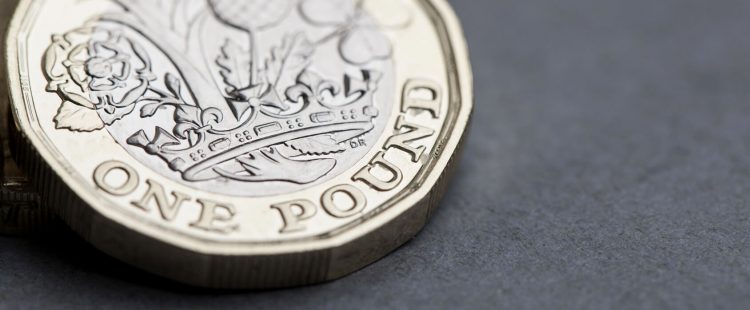To some people, financial planning seems almost a taboo subject. It can feel complicated, messy and stressful – especially if there’s not much money to work with. In reality, the opposite is usually true.
It can actually be quite straightforward, and help to alleviate financial stresses in both the short and long terms. It just takes a little time and research.
Planning your finances doesn’t have to be intimidating or drawn out. A little work can go a long way, at least in the beginning. Of course, everyone’s situation will be different but everyone can benefit from even the most basic financial planning.
Important Steps to Financial Planning
Let’s look at the steps we’ll follow when building a financial plan.
- Setting financial goals
- Your current financial situation: assets, liabilities and budgets
- Making a plan (and sticking to it)
- Staying on track
Setting Financial Goals
The key to succeeding at anything is to set a goal. Without a goal, you’ll have no way of tracking your progress or knowing if you’ve succeeded. So, the first thing to do is figure out what you want to achieve with your financial plan.
Set goals you want to achieve soon, over a few years and in the long term. Your goals will naturally depend on where you are in life. Here are some common examples:
- A wedding
- A big holiday
- Early Retirement
- Buying a property
- Leaving an inheritance for your children and grandchildren
Writing your goals down is the first step to making them a reality, but this doesn’t happen automatically. To help you stay on track, it’s a good idea to create smaller sub-goals to achieve within the main goal. Breaking goals down like this makes success more likely and gives you an easy-to-follow path.
So, for a big medium-term goal (like buying a house), your main goal and sub-goals might look like this:
- Buy a house:
- Save a deposit
- Set aside a separate savings account for legal fees and surveys
- Speak to a mortgage adviser or financial adviser
- Go house-hunting
- Put in an offer
Even your sub-goals can have smaller goals within them to help you progress, like setting benchmarks for your deposit (reaching £5,000, £10,000 and so on) that you can tick off at intervals.
Your goals will define your financial plan – it’s the first and most important step to success.
Goals and Value

Your financial goals will have a monetary cost to them, but they’ll have a personal value to you too. It’s important to remember that it’s not just money; it’s what you want to achieve in your life – money is just the means to accomplish your goals. Rank your goals by how important they are to you and allocate timescales to them. Don’t focus all your efforts on a short-term goal just because it’s achievable; think about what you really want to get out of your plan and go for it.
Assess Your Current Financial Situation
Now that you’ve got your goals, you know where you want to go. Next, you need to find out where you are now, so you can start working out your route on the financial map. In this section, we’ll find your net worth.
Your net worth is made up of:
- Your assets minus your debts (liabilities)
Liabilities
Let’s get the ugly part out of the way – what you owe. This part is usually easier to work out as most people have detailed, up-to-date records of their debts. To understand what you owe, you need to take timescales into account too. Work out the outstanding amounts on things like:
- Your mortgage
- Any non-mortgage loans you have
- Credit card debts
- Purchases made on finance
These are your long-term financial commitments, not things like bills, which can change.
Depending on where you are in life, this can come out looking like a hopelessly big number. Don’t despair! Just remember that this number is always shrinking as you pay your debts off. Keep this number noted down.
Assets
Now it’s time to add up your assets. This is made up of everything you have saved in the bank, your investments, your pension fund and the value of your properties.
It can be more difficult to track current values but you can get a clear and accurate estimate with a little research. Add all of this together and you’ll have your assets – keep this number noted down too.
Net Worth
Using the numbers you calculated for your assets and liabilities, you can work out your net worth. Simply subtract your liabilities from your assets and there you have it.
Is your net worth a negative number? Don’t worry: this is surprisingly common. Part of financial planning is improving your net worth, which will increase as you gather momentum.
Your plot on the financial map is coming into focus. The next step is to get your income and outgoings written down.
Income
For simplicity, use your earnings after tax; that gives you a real-world figure to work with. Add together things like your salary, pension income, investment dividends (unless they’re automatically reinvested) and any other incoming funds you have.
To keep things simple, it might help to put all of your income and earnings into monthly amounts.
Consider everything: your monthly pay-cheque, interest earned on savings, your pension – anything and everything that regularly and reliably brings in money.
Outgoings

Now comes the complicated bit: figuring out where all of it goes. Gather your bank statements, monthly bills and receipts from regular purchases to put together your monthly spending. This can take some time to do accurately, but it will be worth it.
EvolveMyRetirement® works a little differently to other financial planning tools. Let’s bring in some of the thinking behind EvolveMyRetirement® to build a financial plan.
Instead of lumping all outgoings together, let’s use the EvolveMyRetirement® approach and split outgoings into necessary spending and discretionary spending.
Necessary Spending
Your necessary spending is what you must spend in order to maintain your current lifestyle. That’s your rent or mortgage payments, bills, mobile phone contracts, monthly food shopping, commuting costs – every regular expense that maintains your lifestyle as it is.
Check your standing orders, direct debits and bank statements and filter out any non-essential spending to find what the sum of your necessary spending is. Your necessary spending doesn’t include anything outside of your regular living expenses.
Discretionary Spending vs Disposable Income

If you subtract your necessary spending from your net income after tax, you’ll be left with your disposable income. It can only be increased either by earning more money, or by reducing your necessary spending.
Discretionary spending is different to disposable income. Disposable income is whatever you have left after your necessary spending, while discretionary spending only applies to the money you use on ”luxuries”: coffees, meals out, going to the cinema, holidays, you name it.
You pay for your discretionary spending out of your disposable income. Assuming you have enough disposable income, whatever you don’t use for discretionary spending will be available to you for savings and investments, which you’ll need for funding your financial goals.
Your total outgoings are your necessary spending plus your discretionary spending.
If your total outgoings are greater than your income, you need to act fast. Find ways – drastic ways if you must – of reducing your outgoings. Make this a new goal, and make it the first one you achieve.
Improving Your Disposable Income

Increasing your disposable income can fast-track you to your financial goals, whilst still allowing you plenty of discretionary spending.
The simplest answer is always “earn more money” – but it’s also the least likely to be achieved and sometimes it just isn’t practical. You can do things like seek better-paid employment or take on a second job if you have the time.
More often than not, improving your disposable income will depend on reducing your necessary spending. Let’s look at a few things you could potentially reduce:
- Tighten your food shopping budget
- Are you paying the right taxes or are you eligible for any benefits? Contact your local authority to find out
- Switch to a lower energy tariff and monitor your utilities usage closely
- Phone and internet contracts are becoming more competitive. Switch to a cheaper provider
- Avoid taking on any more outgoing commitments, like hire purchase or finance deals
There are more drastic options, like moving into a cheaper rented property or house-sharing, and reducing the number of cars you run. Some sacrifices will be harder than others, but misery for the sake of saving isn’t advised. Try to stay happy.
One advantage in reducing your necessary spending over relying on pay rises is that the savings can often last a lifetime, well into your retirement. On the other hand, a pay rise only lasts until your retirement, so after that you’ll no longer get the benefit. This becomes more and more important the closer you get to retirement.
Making Your Financial Plan (and Sticking to it)

By now, we’ll have identified the key elements we need to know in order for our financial plan to work:
- Goals (how much they cost and time frames)
- Assets
- Liabilities
- Net worth
- Income
- Necessary spending
- Disposable income
- Discretionary spending
Getting to this point was hard work, but this is where it will all pay off. You can now clearly see how much you can afford to save or invest based on your budgeting and current financial situation.
Armed with this information, you can start plotting how to achieve your goals. Your saving strategy will depend on the time frame of the goal.
Long-term goals, and saving for retirement, are slow burners which can run in the background while more pressing goals, like saving for a special gift, can be completed quickly. In the end, it’ll all come down to how and where you save.
This is all general information to use as a framework and shouldn’t be considered advice for building a plan; speak to a financial adviser to get information more specific to your needs.
Basically, your plan will prioritise goals based on the timescales you’ve established for them and their importance to you. Divide up your disposable income in the best way for discretionary spending, savings, investments and backup plans.
Let’s look more closely at how you can save.
Saving for Long Term Goals
Let’s exclude saving for retirement for now. There are many options open to you for effective long-term saving, like investing money in several places, stocks and shares, maybe even a Lifetime ISA.
Diversifying how you save and invest is a good way to mitigate risk. Investing can also help avoid inflation devaluing your money over time – much more important when saving over longer timescales.
In the early days of saving when the stakes are low, some savers can afford to be riskier with how they invest.
Generally speaking, as the endgame is so far in the future, savers will find a “save and forget” solution appealing. It’s still a good idea to keep abreast of any changes that might impact your savings, though, or to seek financial advice or management.
As you approach the end and the goal is in sight, it may be beneficial to move things around, lower your investment risks and start the process of consolidating your savings. When the target date for your goal comes around, you should have your money ready as accessible cash, ready to use.
Saving for Medium- and Short-Term Goals
Medium-term saving (5 to 10 years) can benefit from strategies similar to those used for long-term saving. Lower-risk, lower-yield investments could help safeguard value during less certain times, with smaller but steady growth.
When saving for a short-term goal, keeping the money as accessible as possible in the form of cash deposits is common. Short-term goals tend to cost less and will reap smaller rewards from investments.
Saving for Retirement
Having enough for your retirement isn’t a goal, it’s a necessity. We all know that retirement is going to come around and that we’ll have to prepare accordingly. You may though have a goal to retire earlier than average, in which case you’ll need to save for it faster.
Retirement savings are special. Because retirement’s an inevitability, a baseline amount of retirement savings should be funded regularly out of your disposable income, unless it’s already being funded directly from your pay packet.
Depending on your age, retirement savings might be long-, medium- or short-term, so they don’t fit the traditional mould of savings.
The simplest and most common way to fund your retirement is with a pension. Workplace pensions are now available to all employees over 22 years old who earn more than £10,000 a year. Employers pay in a percentage which you can top up.
You’re not tied to a workplace pension – you can open a personal pension with any provider, who’ll invest the money on your behalf for the best returns.
Other options include certain types of ISAs and savings accounts. These might not be the best options long-term, it depends on your personal circumstances and tax situation. Regardless of your age or career progress, you should speak to a financial adviser before applying for any kind of pension.
Staying on Track
At the start, we covered the importance of goals and smaller sub-goals to help keep you on track. It’s not always as simple as that. It’s more than likely that life will throw a few curveballs your way. Keeping on track with your savings and goals can be extremely difficult if you hit a crisis point – a situation that could force you into wiping out large chunks of your saved and invested money just to stay afloat.
Managing the Unforeseen
Life is unpredictable. Along the way, we’ll encounter “known unknowns” and “unknown unknowns”. Sounds confusing, doesn’t it?
Known unknowns are things like inflation. We know it will happen, but we don’t know by how much. We can account for it with sensible predictions or react to it as it happens.
Unknown unknowns are things we haven’t even thought of, bolts out of the blue. Things we might not be prepared for. It doesn’t necessarily mean that unknown unknowns will always be bad, but they could well be.
Whatever kind of saving you’re undertaking, an emergency fund is essential. This contingency isn’t for speculative investing; rather, it’s stowaway, rainy-day money. It’s to cover you in the worst of times. It’s common to see recommendations of saving up at least six months’ worth of necessary spending for your emergency fund.
Planning Your Finances with EvolveMyRetirement®
EvolveMyRetirement® is a powerful and sophisticated financial planning calculator that’s easy to use. By combining a genetic algorithm with Monte Carlo simulation, it’s able to provide results that other planning tools simply can’t.
Sign up for free now at evolvemyretirement.com.
Have You Considered an Independent Financial Adviser?
If you have a particular financial decision or problem to address, consulting a financial adviser can help you save money and take the worry out of the process.
